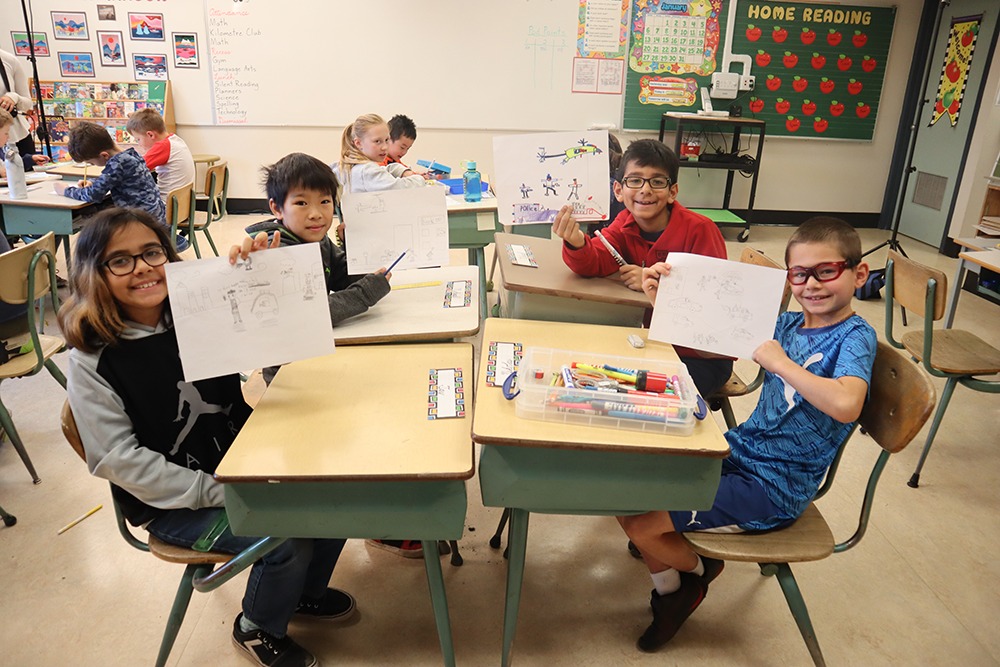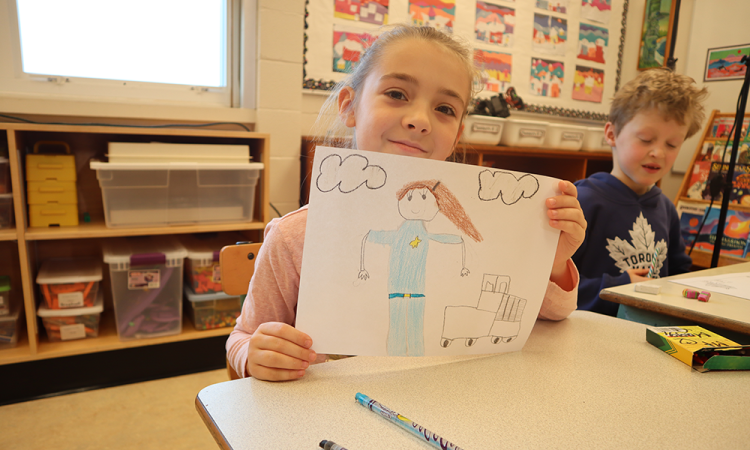According to Statistics Canada, women in Canada only hold about a third (35.6%) of management occupations and 31% of senior management-level occupations.
Research shows gender stereotyping in education and the work world starts at a very early age. Children as young as seven risk ruling out future job options because of their gender, race and background, according to the OECD’s Director of Education and Skills Andreas Schleicher.
Gender stereotypes affect young people’s view of their identity and their educational and career aspirations. They are woven into every aspect of our lives, from the choice of a child’s toy to the subjects that we encourage students to pursue based on their gender.
Inspired by Education and Employers’ highly successful Redraw the Balance video, I decided to organize an experiment in my role as Career Education Co-ordinator for the Greater Victoria School District. With the support of teachers and with a film crew on hand to document the results, I had a class of Grade 3s from Braefoot Elementary participate in an activity to see how much gender bias was in this B.C. classroom.

Students were asked to draw pictures of people who do jobs that are stereotypically done by men: an electrician, police officer and professional athlete. After they had drawn and named their characters, three women who do those jobs entered the room. They shared what subjects they enjoyed while going to school and how their skills and talents impact their community.
The children were excited and then confused to see that each of the guests was a woman. The teacher and film crew were surprised to see that the simple activity had such a big impact on the students. The faces of the students said it all.
As much as we consider Canada ahead of the curve with regard to gender stereotypes in the classroom, the results were shocking. The students drew 45 pictures of men and 11 pictures of women. The results highlighted that we may not be doing quite as well as we thought to dispel myths about gender and careers.

In response to the project, The Pathways and Partnerships team from the Greater Victoria School District expanded the program to reach even more schools. They also host “Guess My Job” events and focus a lot of time and energy on teacher training. Teachers often unknowingly reinforce gender roles through the language they use and expectations of their students. Once armed with ways to address gender bias, teachers feel empowered to make a change in their classrooms.
It should be noted that gender bias goes both ways. It wasn’t a coincidence that a male elementary school teacher was chosen to participate. People of all genders and all ages are negatively affected by the norms and expectations of gender bias.
The Greater Victoria “Redraw the Balance” video was included in two exciting global events last year. Our video was featured alongside other countries that also ran the program, including Denmark, China and South Africa. You might be surprised by the similarities of the students’ responses.
The video was also shared at the Reykjavík Global Forum, which convenes influential women leaders from across sectors to share ideas and solutions on how to further advance society toward female and male equality and to promote and positively develop the number of women in leadership positions.
It was also previewed at the International Conference on the Future of Girls in STEAM in Madrid, Spain. The STEAM Alliance is an initiative of the Spanish Ministry of Education that aims to foster STEAM vocations for young women to reduce the gender gap.
Events like this can change students’ attitudes toward education, influence their future plans and subject choices, and motivate them to study harder.
The Greater Victoria School District will continue to invest in developing engaging, research-backed career education resources and programs for students in Grades K-12. Our goal is to help close the inequity gap that so many students face and prepare them for a brighter future.




